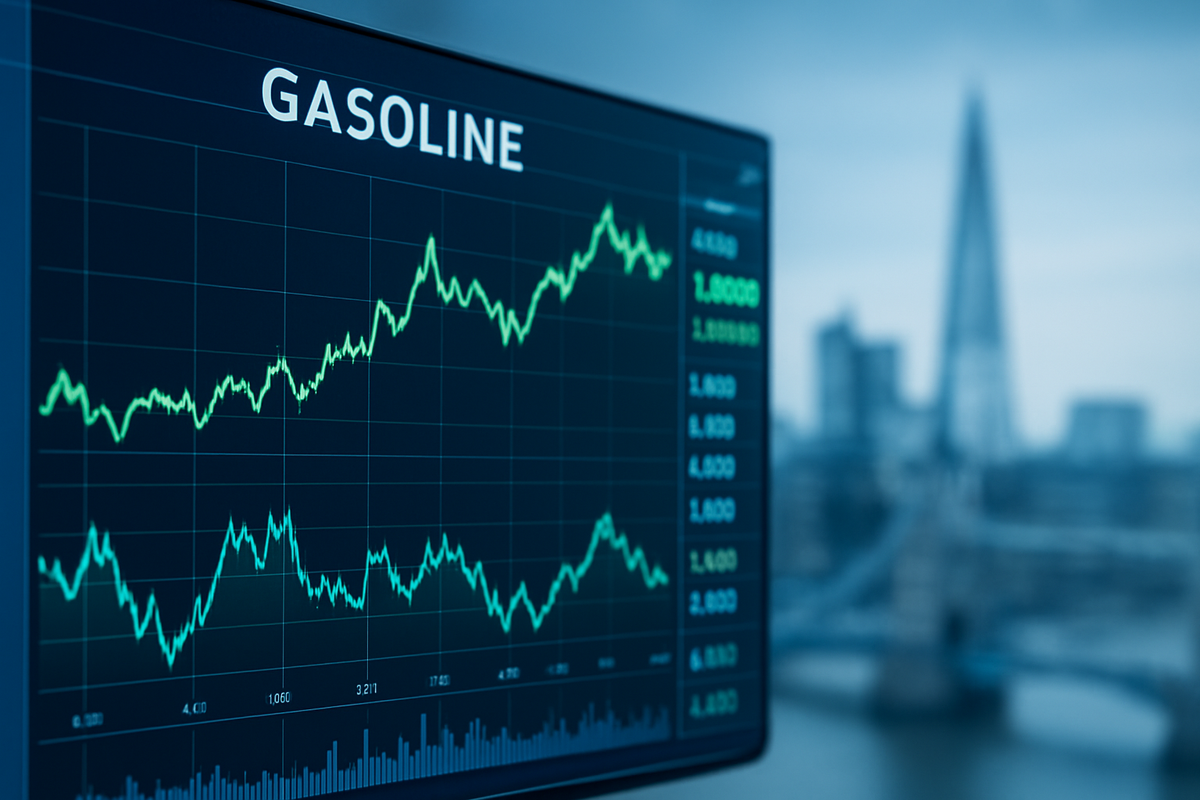
London, UK – October 30, 2025 – In a landmark move poised to reshape the landscape of European energy markets, Argus Media, a leading global energy and commodity price reporting agency, has today launched new intraday price assessments for its benchmark Eurobob (EBOB) gasoline. This initiative, which provides four daily snapshots of European gasoline values, marks a significant leap forward in market transparency and price discovery, promising to empower traders, refiners, and financial institutions with unprecedented real-time insights.
The introduction of these granular price assessments – published at 09:30, 12:00, 14:00, and 16:30 UK time – directly addresses a growing market demand for more immediate and precise data. By pulling back the curtain on intraday fluctuations, Argus aims to enhance risk management capabilities, optimize trading strategies, and facilitate more accurate comparisons with global gasoline benchmarks, ultimately fostering a more efficient and responsive commodity market.
Detailed Coverage: A New Rhythm for European Gasoline Trading
Argus's new intraday Eurobob pricing system is designed to complement its existing full-day assessments, providing a dynamic pulse on the European gasoline market. The assessments cover both non-oxygenated (non-oxy) and oxygenated (oxy) grades of Eurobob gasoline, catering to the diverse blendstock needs for E10 and E5 gasoline across Europe and for export markets. The methodology behind these intraday prices is robust, drawing on the latest available information from the Free On Board (FOB) Amsterdam-Rotterdam (AR) spot gasoline barge market and real-time Eurobob swap values, ensuring that the assessments reflect current supply and demand dynamics.
This development comes after a period of evident market consultation and feedback, as highlighted by Adrian Binks, Chairman and Chief Executive of Argus Media, who noted the company is "pleased to respond to requests from market participants." The Argus Eurobob non-oxy barge price already serves as a critical reference for European gasoline and is the settlement basis for futures contracts on major exchanges like ICE (ICE) and CME Group (CME). This foundational role underscores the significance of enhancing its underlying transparency. Preparatory adjustments, including changes to Argus European products, were already effective as of October 20, 2025, signaling a concerted effort leading up to today's launch.
Key players directly involved include Argus Media itself, headquartered in London with a global footprint, serving a vast array of companies, trading firms, and governments. Market participants, including wholesale and downstream entities, particularly those in West Africa where Eurobob prices are increasingly referenced, are the primary beneficiaries and drivers of this demand. Initial market reactions have been overwhelmingly positive, with industry stakeholders welcoming the enhanced transparency as a crucial tool for improved decision-making and risk mitigation in a volatile energy landscape.
Impact Analysis: Winners and Losers in a Transparent Market
The advent of Argus's intraday Eurobob pricing is set to create distinct winners and losers among public companies operating within the commodity ecosystem, particularly among trading houses, refiners, and financial institutions.
Trading Houses and Integrated Oil & Gas Majors: Companies with sophisticated trading operations, such as Glencore plc (LSE: GLEN), Shell plc (LSE: SHEL), BP p.l.c. (LSE: BP), TotalEnergies SE (EPA: TTE), and Eni S.p.A. (BIT: E), are poised to be significant winners. Their advanced IT infrastructure and algorithmic trading capabilities are well-suited to process and act on high-frequency data. This increased visibility will unlock new opportunities for intraday arbitrage across physical and derivatives markets, geographies, and time horizons. While this could potentially compress margins on some previously opaque arbitrage plays, firms with superior analytical prowess and rapid execution will gain a competitive edge, leading to potentially higher profits from increased trading volumes and more effective hedging. Conversely, trading entities lacking the technological sophistication to integrate and react to this data in real-time may find their market share eroded.
Refiners: European refiners, including those operated by Shell plc (LSE: SHEL), BP p.l.c. (LSE: BP), TotalEnergies SE (EPA: TTE), Eni S.p.A. (BIT: E), Repsol S.A. (BME: REP), OMV Aktiengesellschaft (VIE: OMV), PKN Orlen S.A. (WSE: PKN), and Galp Energia, SGPS, S.A. (ELI: GALP), stand to benefit significantly. Better real-time visibility into Eurobob gasoline crack spreads will enable them to optimize refinery output more dynamically, making quicker decisions on feedstock selection and product slate adjustments to maximize margins. This also allows for more precise and timely hedging of future gasoline sales or blendstock purchases, reducing exposure to "flat price risk." Refiners with flexible configurations and agile decision-making processes will thrive, while those with rigid operations or slower adaptation may face suboptimal production and increased exposure to price volatility.
Financial Institutions: Investment banks and hedge funds with active commodity derivatives desks, such as Goldman Sachs Group Inc. (NYSE: GS), Morgan Stanley (NYSE: MS), JPMorgan Chase & Co. (NYSE: JPM), Barclays PLC (LSE: BARC), and Société Générale S.A. (EPA: GLE), will also see substantial impacts. The enhanced data will improve their ability to price and trade Eurobob gasoline futures, options, and swaps with greater accuracy. New opportunities for algorithmic trading strategies will emerge, allowing them to exploit short-term market inefficiencies. This will also lead to more precise and real-time risk assessments for their commodity portfolios, improving compliance and collateral management. However, increased market efficiency could reduce some arbitrage opportunities over time, demanding more sophisticated quantitative models to generate alpha and intensifying competition.
Wider Significance: A Paradigm Shift in Commodity Pricing
Argus's intraday Eurobob pricing is more than just a product launch; it's a reflection and accelerator of broader industry trends towards unprecedented transparency in commodity markets. This move aligns with a global push for more immediate and precise market data, driven by increasingly interconnected and volatile energy landscapes. By providing real-time insights, Argus contributes to enhanced price discovery, reduced information asymmetry, and a more robust environment less susceptible to manipulation.
The ripple effects will extend far beyond direct users. Competitors in the price reporting agency space will face immense pressure to match or exceed Argus's offerings, fostering a healthier competitive environment and ultimately benefiting the market with a broader array of comprehensive data. Partners like ICE (ICE) and CME Group (CME), whose futures contracts settle against Argus Eurobob prices, will see new opportunities for integrating this enhanced data, potentially spurring the development of more sophisticated algorithmic trading and increasing liquidity in derivatives markets.
While not a direct regulatory mandate, this proactive adoption of granular pricing aligns perfectly with broader regulatory objectives for market integrity and efficiency. Regulatory bodies globally consistently advocate for measures that reduce market manipulation and enhance fair competition. Increased transparency, by shedding more light on transactional activity, creates a more auditable market environment, potentially influencing future discussions on data reporting standards in energy markets.
Historically, the evolution of commodity pricing has consistently moved towards greater transparency. Similar shifts have been observed in crude oil and natural gas markets, where the introduction of more frequent assessments and futures contracts significantly improved price discovery. Within the gasoline market, Argus's initiative mirrors its own recent launch of MEBOB pricing in the Mideast Gulf and the established RBOB price in the US, highlighting a global trend towards harmonizing and enhancing gasoline pricing mechanisms. The replacement of the opaque London "Fix" with electronic platforms for precious metals also serves as a strong precedent for how increased pre-trade transparency can improve market quality and efficiency.
What Comes Next: Navigating a More Dynamic Market
The immediate future will see market participants grappling with a "learning curve" as they integrate these new data streams. Initial volatility might occur as the market adjusts to the increased transparency, but the long-term outlook points towards an "unprecedented era of transparency and visibility" for the European gasoline market. This will fundamentally redefine operations, enabling optimized trading strategies and more effective mitigation of exposures in a volatile global energy landscape.
Strategic pivots will be essential. Companies must prioritize technological upgrades to their analytical tools and risk management systems, enabling real-time processing of the more frequent assessments. There will be a definitive shift towards dynamic, real-time decision-making, moving away from sole reliance on end-of-day reports. This will necessitate enhanced hedging strategies, significant investment in personnel training, and a strengthening of internal data analytics capabilities to derive actionable insights from the richer data.
Market opportunities abound, including improved price discovery, new trading and arbitrage opportunities, enhanced liquidity, and the potential for new financial products. However, challenges such as the initial volatility, the significant technological investment burden for smaller players, increased data complexity, and intensified competitive pressure will also emerge.
Several scenarios could unfold. The most likely outcome is an accelerated modernization and integration of the European gasoline market with global counterparts. Trading will become more active and sophisticated, with real-time data driving a larger proportion of decisions, potentially setting a precedent for other commodity markets to adopt similar intraday pricing. While less likely, a period of increased volatility and fragmentation could occur if market participants struggle to adapt. Ultimately, the success of Argus's initiative could lead to intraday assessments becoming a new industry standard for key commodity benchmarks, pushing for greater real-time visibility across the board.
Wrap-Up: A Transparent Future for Energy Markets
Argus's introduction of intraday pricing for Eurobob gasoline marks a pivotal moment for European and wider global gasoline markets. The key takeaway is a fundamental shift towards greater transparency and real-time price discovery, driven by market demand and enabled by technological advancements. This move is expected to usher in a more efficient, dynamic, and sophisticated trading environment, empowering market participants with superior tools for decision-making and risk management.
Moving forward, the market will become more demanding, favoring those who can effectively harness and act upon real-time information. Investors should watch closely for how various public companies adapt their technological infrastructure, trading strategies, and risk management frameworks. The success of this initiative could catalyze similar innovations across other commodity sectors, signaling a broader trend towards enhanced data granularity and transparency in financial markets globally. The coming months will reveal the full extent of this transformation as the market settles into its new rhythm.
This content is intended for informational purposes only and is not financial advice





